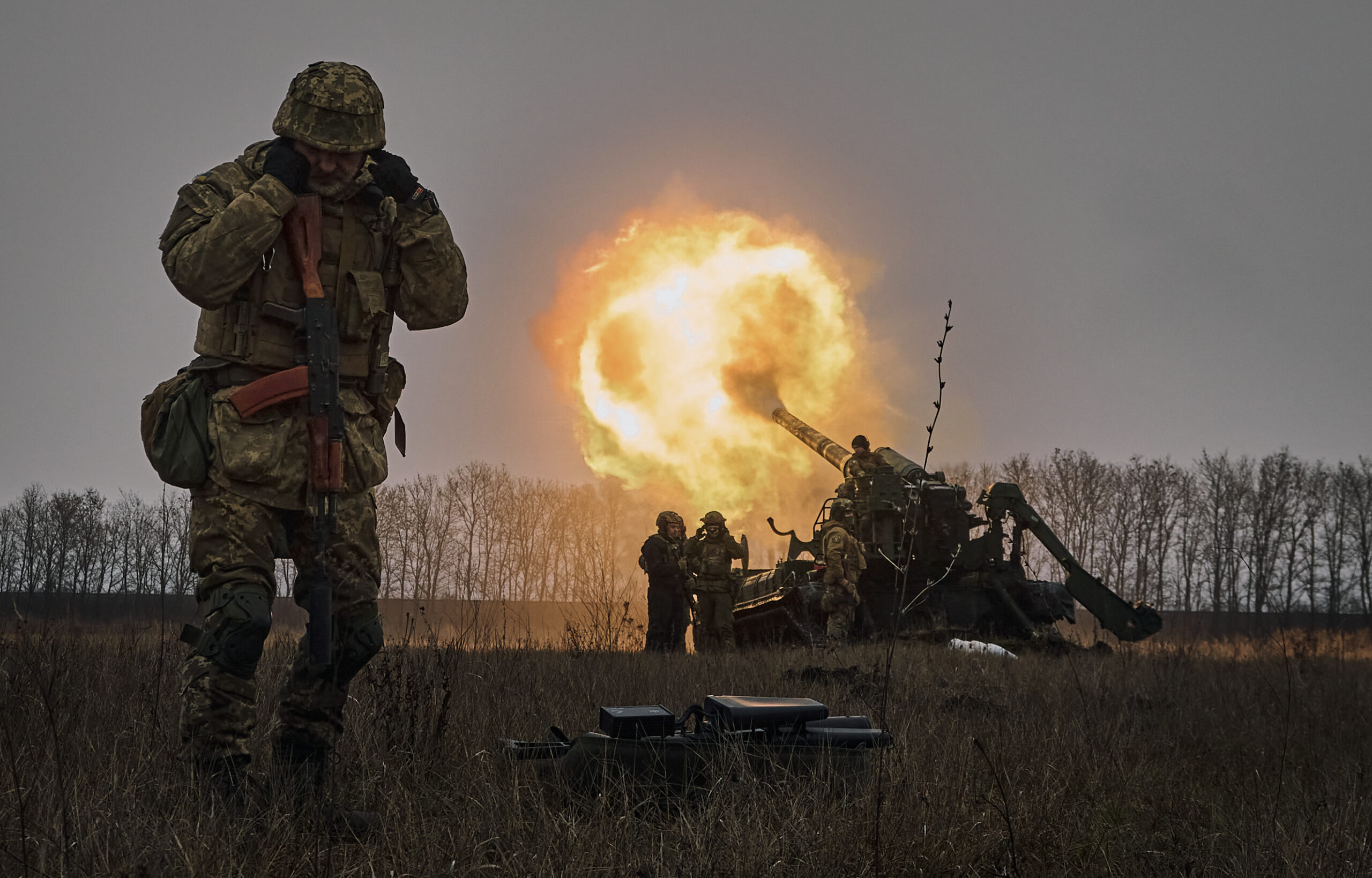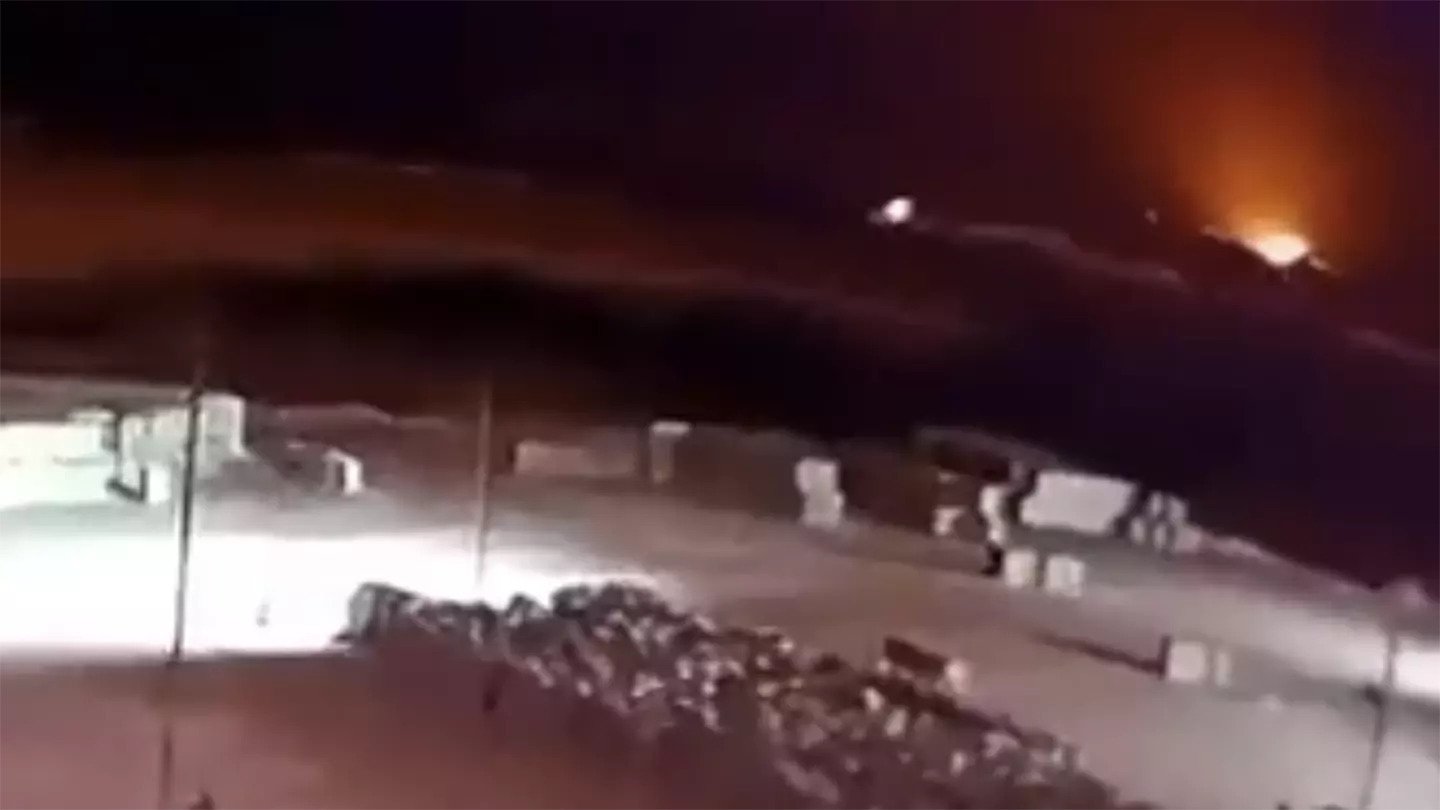Ukrainian officials have promised not to use weapons supplied by the west to attack inside Russian borders. But they’ve never made any such assertions about their own weapons, one of which apparently exploded Monday near the city of Kaluga some 200 miles northeast of the border and 100 miles southwest of Moscow.
“It was established that at five in the morning in a forest near the city, a drone exploded in the air at a height of 50 meters,” Vladislav Shapsha, governor of Kaluga Oblast, reported Monday on his Telegram channel. “There is no damage to civil and social facilities. There were no casualties. Representatives of law enforcement agencies are working on the spot.”
The drone was a Tu-141, a converted Soviet-era jet surveillance drone on its way to attack an unnamed nearby military facility, the Russian media outlet Mash claimed on its Telegram channel.
“A Ukrainian UAV crashed today in Kaluga simply because it caught on a tree branch,” according to Mash. “According to our information, it was a Soviet-era Tu-141 Strizh UAV. To one of the military facilities in the region, [it] carried high-explosive fragmentation ammunition OFAB-100-120. After the explosion of this bomb, a five-meter funnel is formed, and the fragments scatter within a radius of one hundred meters.”
While we could not independently confirm the Mash assessment about the Tu-141, the Russian Defense Ministry and Ukrainian officials say Ukraine has used those drones as a strike weapon before. The Russian Ministry of Defense (MoD) – and a Ukrainian official cited by The New York Times – claimed the drones were used in December attacks on the Engels and Dyagilevo air bases that reportedly damaged some Russian aircraft and injured personnel.
We were the first to report on these improvised weapons last March, when one of them landed in Croatia in a bizarre incident. Ukraine converted the cruise missile-like drones into strike weapons by adding a warhead. You can read more about that here.
The Tu-141 that exploded near Kaluga apparently offered the first glimpse of what one of those warheads looks like. It appears to be a OFAB-100-120 100kg high-explosive bomb — a relatively common air-to-ground munition.
Meanwhile, the Shaykovka Air Base in the oblast, about 140 miles north of the Ukrainian border and about 170 miles southwest of Moscow, was the scene of an Oct. 7 Ukrainian suicide drone attack, according to Russian media and Ukrainian intelligence officials. As with today’s attack, Shapsha, the oblast governor, said there was no damage at the time.
The base is home to Russian Tu-22M Backfire bombers from the 52nd Heavy Bomber Aviation Regiment.
While none of these strikes inside Russia appear to have yet caused major damage, Ukraine will no doubt continue to try to find ways to strike deep across the border.
Before we head into the latest news from Ukraine, The War Zone readers can get caught up with our previous rolling coverage here.
The Latest
When asked if the embattled city of Bakhmut, in Donetsk Oblast, would fall and whether that would affect the course of the war, White House National Security Council spokesman John Kirby on Monday declined to prognosticate.
“The last thing I’m going to do is predict the success or failure of any particular operation,” Kirby told reporters, including from The War Zone, during a Monday afternoon briefing. “There is intense fighting at that moment, as there has been for much of the last several weeks. Ukrainians are still fighting hard for Bakhmut.”

“You heard President Zelensky talk in pretty stirring language over the weekend about the importance of the fight there and how much more they’re going to continue to battle for [it],” said Kirby. “But I’m not going to get into predicting success or failure one way or the other.”
Kirby pointed to Yevgeny Prigozhin, leader of the Wagner mercenary group, as the force driving Moscow’s efforts in Bakhmut.
“Mr. Prigozhin seems to be the most interested in taking Bakhmut,” Kirby said. “We think it’s because of selfish personal gain, not only to improve his elevated status within the Kremlin hierarchy, but also because there are gypsum mines there and he might have some economic gains to be made by taking that route and he’s not afraid to throw convict after convict into the fight.”
Here are some key takeaways from the latest Institute for the Study of War Assessment.
- Current Ukrainian Defense Minister Oleksii Reznikov (pending a potential reshuffle) stated that Ukrainian officials expect possible Russian offensive operations ahead of the anniversary of the invasion of Ukraine on Feb. 24, but noted that there are no Russian strike groups near Kharkiv City.
- Russian forces continued offensive operations in the Kreminna area, and Russian milbloggers claimed that Russian forces launched renewed offensive operations northwest of Svatove in recent days.
- Russian forces continued to conduct ground attacks around Bakhmut. Russian milbloggers are conflicted on whether Ukrainian forces are withdrawing from Bakhmut, as Wagner Group financier Yevgeny Prigozhin denied claims of a Ukrainian withdrawal] ISW continues to assess that Russian forces are likely unable to force an imminent Ukrainian withdrawal from Bakhmut.
- Russian sources continued to claim that Ukrainian forces are transferring reserves in the Vuhledar direction.
- Geolocated satellite footage shows that Russian forces built a fortified base on the Arabat Spit in northeastern Crimea between Oct. 18, 2022, and Jan. 21, 2023.
- The Ukrainian General Staff reported that Russian forces continue to import medical personnel from Russia to treat wounded military personnel in occupied Luhansk Oblast, supporting ISW’s assessment that Russian forces are preparing for a renewed offensive in Luhansk Oblast.
Speaking of Prigozhin and Bakhmut, the Wagner capo di tutti capi claimed that he flew over the city in an Su-24M Fencer strike jet and challenged Zelensky to an aerial duel.
A clip of that flight was released by Prigozhin’s press service, which said it was filmed aboard a Fencer operated by Wagner.
It was the latest in a series of statements and videos, Reuters noted, in which Prigozhin has sought to promote himself and his private army as the spearhead of Russian military operations in east Ukraine.
“Volodymyr Oleksandrovych (Zelensky), we have landed. We have bombed Bakhmut,” Prigozhin said in the short video, according to Reuters.
“Tomorrow, I will fly a MiG-29. If you so desire, let’s meet in the skies. If you win, you take Artyomovsk (Bakhmut). If not, we advance till (the River) Dnipro.”
Kirby on Monday said he could not confirm Sunday’s Wall Street Journal exclusive on plans by Moscow and Tehran to build a new factory in Russia “that could make at least 6,000 Iranian-designed drones to continue attacking Ukrainian cities.
However, there’s “no doubt in our mind that Russia still continues to get drones from Iran, that they’re using these drones to kill innocent Ukrainians, and that – and this is an equally significant concern – that Russia may be looking for ways to improve Iranian capabilities in the Middle East region.”
As part of their emerging military alliance, the officials told The Wall Street Journal that a high-level Iranian delegation flew to Russia in early January to visit the planned site for the factory and hammer out details to get the project going. The two countries are aiming to build a faster drone that could pose new challenges for Ukrainian air defenses, the officials said.
During his nightly address Monday, Zelensky said personnel changes on the border and front line will bolster Ukraine’s military efforts amid uncertainty over the future of his defense minister.
Zelensky said he wanted to combine military and managerial experience in local and central government but did not directly address confusion about whether his defense minister, Oleksii Reznikov, would be replaced, according to Reuters.
On Sunday, we reported that Maj. Gen. Kyrylo Budanov confirmed to us that he may be nominated to replace Reznikov.
Later that day, Ukrainian parliament member David Arakhamia, head of Zelensky’s Servant of the People Party, said on his Telegram channel that Reznikov “is being transferred to the position of Minister for Strategic Industries to strengthen military-industrial cooperation, which is absolutely logical, given his expertise on ‘Ramstein’ and the need to raise the Ministry, which should do more.”
Budanov, he said, will take over for Reznikov, “which is absolutely logical for wartime.”
However, on Monday, Arakhamia seemingly changed his tune, creating confusion.
“We are waiting for the appointment of the heads of the Ministry of Internal Affairs and the Security Service of Ukraine,” he said on his Telegram channel. “Personnel changes in the field of defense will not take place this week.”
While there is a lot of talk about tanks and drones and artillery, mortars remain a key deadly weapon, as you can see in this video below.
Ukraine’s pairing of PG-7VR munitions with drones continues, in this case reportedly resulting in damage to a Russian Spetznaz Tigr multipurpose all-terrain vehicle.
Land minds too remain problematic for Russians, as the Ukraine Weapons Tracker OSINT group reported with this video apparently showing three Russian tanks damaged or destroyed near Vuhledar, Donetsk.
Ukraine has been the recipient of a wide array of weapons and ammunition, but we are seeing the first images of munitions – in this case 40M11 HE-frag 120mm mortar shells – made in Azerbaijan, according to the Ukraine Weapons Tracker OSINT group.
Speaking of artillery shells, if you ever wondered how they are made, check out this awesome video produced by The New York Times.
It’s from the paper’s deep dive into the process that leads to shells heading to Ukraine.
“Every day for months, Ukrainian soldiers have fired thousands of American-made artillery shells at Russian troops, and all of that ammunition began its journey to the battlefield at factories in northeastern Pennsylvania,” the Times wrote.
The U.K. welcomed Ukrainian troops who are training on the AS-90 155mm self-propelled howitzers it donated.
And the first contingent of Australian troops began training Ukrainians in the U.K. as well.
That’s it for now. We will update this story if there is anything major to add.
Contact the author: howard@thewarzone.com
